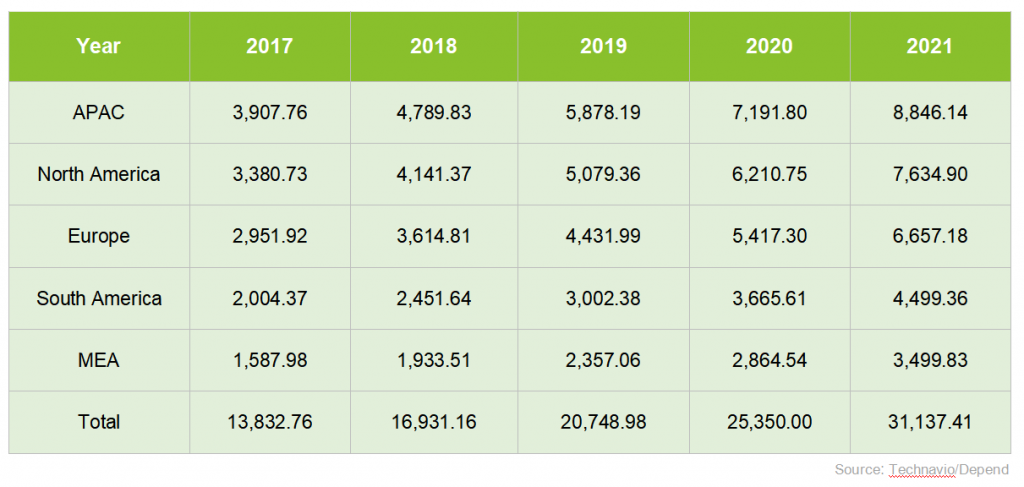Abstract
The global solid state drive (SSD) market is a part of the global electronic components market. In 2022, the global SSD market is valued at $38,9160.6 million and is expected to grow to $11,469.89 million by 2027.
The market is highly fragmented, with numerous participants such as Samsung, SK Hynix, Kioxia, and other major international manufacturers. These manufacturers set the benchmark for market development through their product performance, which is constantly evolving with the changing technology in the SSD market. Currently, SSD technology has reached a mature stage, and the industry is experiencing continuous growth. As the demand for data storage increases in various sectors such as consumer, enterprise, and military aerospace, the application scenarios for SSDs are also expanding.
Overall, despite the current downturn in the semiconductor market, the SSD market is expected to continue its growth trajectory as demand and inventory recover. The market is projected to remain fragmented in 2027, with the SSD life cycle remaining in the growth stage.
1. SSD Overview
An SSD is a solid-state disk or an electronic disk that is used for data storage, and it is built out of semiconductors. It uses the same I/O interface design as HDDs and stores data in solid-state memory. They are made of silicon microchips and store data electronically.
SSDs come in a variety of forms, including 2.5-inch, M.2, and U.2, and are commonly used in laptops, desktops, servers, and other electronic devices. They offer faster boot times, faster file transfers, and improved system responsiveness, making them ideal for tasks that require high-speed data access, such as gaming, video editing, and data analysis.
Unlike traditional HDDs, SSDs are widely used for high-capacity density and enhanced performance. Capacity density is the total gigabytes or terabytes per thermal unit of waste heat. End users such as digital media system designers and other enterprises are looking for advanced SSDs to reduce power consumption requirements.
Due to their durability and higher data transfer rates than HDDS, SSDs are a popular choice for use in a variety of laptops and desktop computers (PCs). For example, the data transfer rate of SSD can reach 600 MB/s, which is 3-4 times that of HDD. In addition, the boot time is only a few milliseconds, and most traditional HDD boot systems take about a few seconds.
The increasing adoption rate of high-end cloud computing interfaces and the expanding demand of enterprises for reliable data storage solutions to perform file backup and information archiving are the major market drivers driving the market growth.
1.1 Market Size
The global solid state drive (SSD) market was valued at $38,916.06 million in 2022 and is estimated to grow to $113,469.89 million in 2027. This will create an incremental growth opportunity worth $74,553.83 million between 2022 and 2027, which translates to around 192% of the market size in 2022.
Exhibit 1: Historic Market Size 2022-2027 ($ million )

Exhibit 2: Market Size Forecast 2022-2027 ($million)

1.2 Market Trend
A solid-state drive (SSD) is a storage device made of semiconductors that is used to store data. Unlike traditional hard disk drives (HDD), which use spinning discs to read and write data, SSDs have no moving parts, making them faster, more reliable, and less prone to failure. They are also more energy-efficient, generating less heat.
With the rise of cloud platforms, from enterprise private clouds to personal clouds, the demand for SSDs is increasing. Key players, such as Google, are responding to this demand by incorporating SSD storage into their cloud infrastructure. This has contributed to the growth of the global SSD market in recent years. The market is expected to continue growing due to the increasing demand for reliable data storage solutions in enterprises and the growing adoption of SSDs in laptops, gaming, and high-end PCs.
1.3 Major Market
Looking at the statistical year, the Asia Pacific region is the main increase in the SSD market. From the analysis of geographical, the Asia-Pacific region includes the surrounding regions of the Western Pacific Ocean, but also contains several key consumer countries. The Asia-Pacific region has made a greater contribution to the overall market size driven by policy and technological development.
Korean semiconductor companies continue to develop and launch new memory chip products to meet the high-speed, high-capacity, and highly reliable storage needs of the Internet of Things.
Japan has provided hundreds of millions of dollars in subsidies to domestic and foreign semiconductor companies to boost their semiconductor industry.
The growth of the total amount of data in China has increased the storage requirements of data centers, and the development space of SSD is broad.
Exhibit 3: Historic Market Size–Geography Segment 2017 - 2021 ($ million)

From hard drives to SSDs, the United States has played an important role in the development of server storage technology. The rise and development of HDD laid the foundation of server storage technology, and the rise of SSD has significantly improved server performance. To gain a competitive advantage and improve enterprise efficiency, U.S. companies are increasing spending on IT infrastructure, which is increasing the demand for storage solutions, including SSDs, to increase data transfer speed and achieve high efficiency.
Exhibit 4: Historic Market Size–Country Segment 2017 - 2021 ($ million)

2.Product Overview
2.1 Vendor Overview and Analysis
The global SSD market is fragmented, with various players operating in the market. Established brands such as Samsung, Kingston, Toshiba, and Western Digital have a strong foothold in the market and are responsive to technological advancements. These vendors have high entry barriers due to their strong customer base, control over the supply chain, and high penetration in potential application segments. For example, Samsung vertically integrates the production of SSDs and drives technological advances.
According to the Impact Index, which analyzes the contribution of global SSD market revenue to the overall business of vendors, there are 20 major players in the market, with 15 listed as the most critical vendors and the remaining five defined as contributors to the Impact Index.
